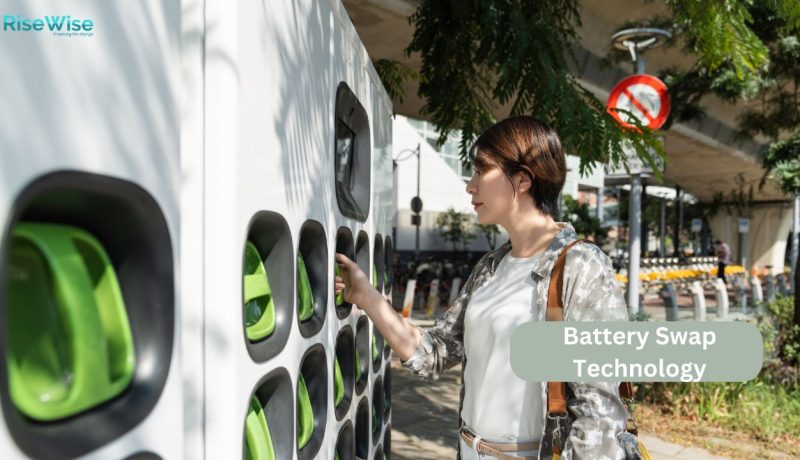
Battery Swap Technology: Transforming India’s EV Landscape
The rise of electric vehicles (EVs) in India has brought forward numerous innovations, but none as impactful as Battery Swap Technology. This revolutionary approach addresses two of the most significant challenges in EV adoption—long charging times and range anxiety. With an expanding network of swap stations and an array of compatible vehicles, battery swapping is becoming a game-changer in India’s EV ecosystem. Tools like the EV Calculator make it even easier for consumers to analyze the benefits of this technology.
Table Of Content
- What is Battery Swap Technology?
- How Battery Swap Technology Works
- 2-Wheelers in India Supporting Battery Swap Technology
- Advantages of Battery Swap Technology
- The Role of EV Calculators in Battery Swapping
- Challenges in Battery Swap Technology
- The Future of Battery Swap Technology in India
- Conclusion
- Frequently Asked Questions
- What are the costs associated with battery swapping in India?
- Can I use a battery from one manufacturer in a vehicle from another?
What is Battery Swap Technology?
Battery swapping is a system where EV owners can replace their depleted batteries with fully charged ones at designated swap stations. Unlike conventional charging, which can take hours, battery swapping reduces this process to mere minutes, providing a faster and more convenient alternative.
How Battery Swap Technology Works
The process is designed to be quick and seamless:
- Arrival at the Station: The EV owner drives into a swap station equipped with advanced mechanisms or staff for swapping.
- Battery Identification: The station identifies the vehicle and ensures compatibility with the replacement battery.
- Battery Replacement: The depleted battery is removed, and a fully charged one is installed in a matter of minutes.
- Billing and Management: Users are charged based on the service model, which could include pay-per-use or subscription plans.
2-Wheelers in India Supporting Battery Swap Technology
Battery swap technology is making significant headway in the Indian two-wheeler EV market. Here are some of the most notable models and their rated power:
- Honda Activa E
- Rated Power: 1.2 kW
Honda’s electric version of the Activa is equipped with battery swapping compatibility, supported by a growing network of swap stations across India.
- Rated Power: 1.2 kW
- Ola Electric S1-Z Scooter
- Rated Power: 3.0 kW
Ola’s delivery-focused electric scooter features removable batteries designed for quick swapping, catering to the needs of urban riders.
- Rated Power: 3.0 kW
- Bounce Infinity E1
- Rated Power: 1.5 kW
This scooter offers a “Battery-as-a-Service” model, allowing users to swap batteries at convenient stations, eliminating the need for home charging.
- Rated Power: 1.5 kW
Advantages of Battery Swap Technology
- Minimized Downtime
Battery swapping cuts the “charging time” to minutes, making it ideal for busy urban commuters and delivery fleets. - Cost Efficiency
Using an EV Calculator, users can assess the cost benefits of swapping versus traditional charging methods or fuel consumption. - Standardization
Battery swapping promotes standardization across EV manufacturers, ensuring greater compatibility and ease of use. - Eco-Friendliness
Swapping minimizes the need for individual chargers, reducing infrastructure costs and the associated carbon footprint. - Enhanced Battery Monitoring
Swap stations ensure users receive batteries in optimal condition, improving performance and safety.
The Role of EV Calculators in Battery Swapping
The EV Calculator is a valuable tool for EV owners, helping them:
- Estimate Costs: Calculate the savings from battery swapping compared to home or public charging.
- Assess Environmental Impact: Determine the reduction in carbon emissions from adopting EVs and battery swapping.
- Optimize Usage: Evaluate the most cost-effective and efficient charging or swapping strategies.
Challenges in Battery Swap Technology
While promising, battery swapping faces some challenges:
- Standardization Issues: Not all EVs currently support compatible battery designs, requiring industry-wide collaboration.
- Infrastructure Investment: Establishing swap stations across India demands significant funding and partnerships.
- Battery Ownership Models: Consumers need clarity on whether they own the batteries or lease them as part of a service.
The Future of Battery Swap Technology in India
With government support and private investment, battery swapping is set to play a pivotal role in accelerating EV adoption in India. Companies like SUN Mobility, Bounce, and Ola are actively expanding the infrastructure, ensuring more consumers can access this convenient solution.
Conclusion
Battery swap technology is reshaping the way we think about EVs in India. By drastically reducing charging times and providing a cost-effective solution for energy management, it is empowering individuals and businesses alike. Whether you’re considering a two-wheeler like the Bounce Infinity E1 or the Ola Electric Scooter, battery swapping offers an efficient and reliable alternative.
Frequently Asked Questions
What are the costs associated with battery swapping in India?
The cost of battery swapping depends on the service model—pay-per-use or subscription. Typically, users pay a fee for the energy consumed and the service provided at swap stations. Using an EV Calculator can help you determine the cost-effectiveness of battery swapping compared to traditional charging or fuel options.
Can I use a battery from one manufacturer in a vehicle from another?
Battery swapping promotes standardization, but compatibility depends on the manufacturer’s adherence to universal standards. Most battery swap systems are designed for specific vehicle models, but initiatives are underway to create interchangeable batteries across brands.






No Comment! Be the first one.